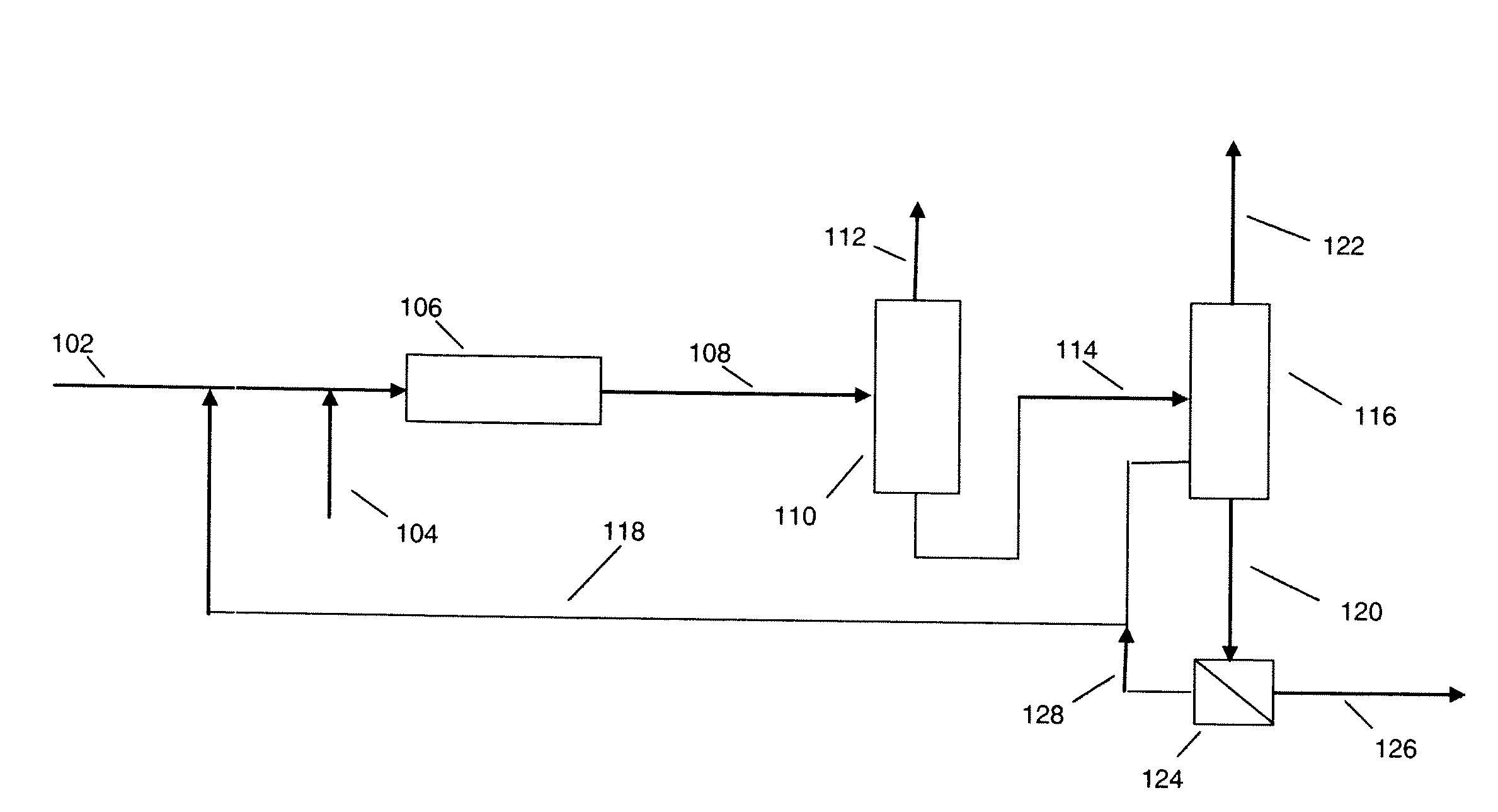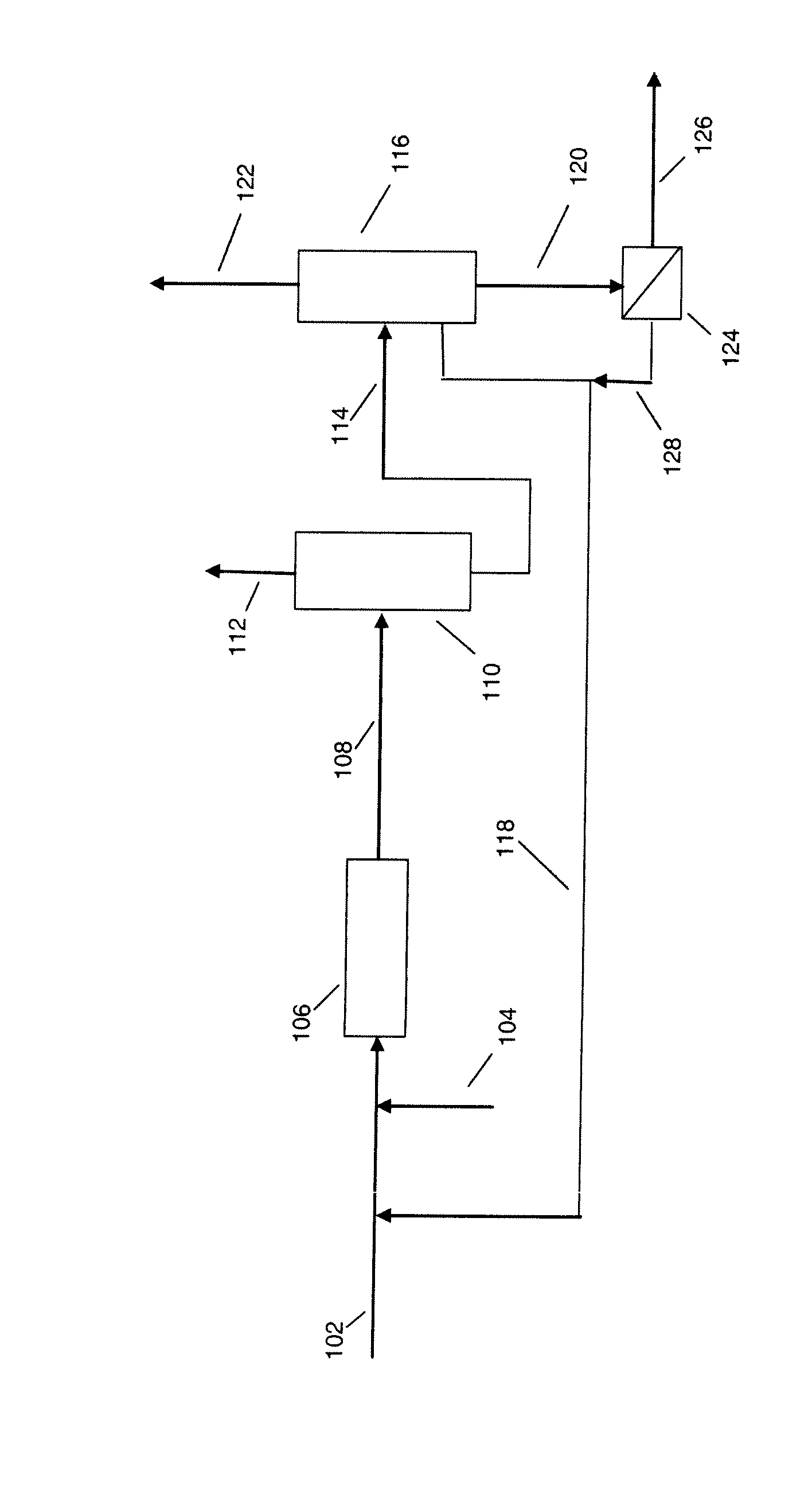Processes for the Isomerization of Feedstocks Comprising Paraffins of 5 to 7 Carbon Atoms
- Summary
- Abstract
- Description
- Claims
- Application Information
AI Technical Summary
Benefits of technology
Problems solved by technology
Method used
Image
Examples
Embodiment Construction
[0032]Any suitable paraffin-containing feedstock may be used in the processes of this invention. Naphtha feedstocks are the most often used as the feedstocks to isomerization processes. Naphtha feedstocks comprise paraffins, naphthenes, and aromatics, and may comprise small amounts of olefins, boiling within the gasoline range. Feedstocks which may be utilized include straight-run naphthas, natural gasoline, synthetic naphthas, thermal gasoline, catalytically cracked gasoline, partially reformed naphthas or raffinates from extraction of aromatics. The feedstock essentially is encompassed by the range of a full-range naphtha, or within the range of 0° to 230° C. Usually the feedstock is light naphtha having an initial boiling point of 10° to 65° C. and a final boiling point from 75° to 110° C.; preferably, the final boiling point is less than 95° C.
[0033]Naphtha feedstocks generally contain small amounts of sulfur compounds amounting to less than 10 mass parts per millio...
PUM
 Login to View More
Login to View More Abstract
Description
Claims
Application Information
 Login to View More
Login to View More - R&D
- Intellectual Property
- Life Sciences
- Materials
- Tech Scout
- Unparalleled Data Quality
- Higher Quality Content
- 60% Fewer Hallucinations
Browse by: Latest US Patents, China's latest patents, Technical Efficacy Thesaurus, Application Domain, Technology Topic, Popular Technical Reports.
© 2025 PatSnap. All rights reserved.Legal|Privacy policy|Modern Slavery Act Transparency Statement|Sitemap|About US| Contact US: help@patsnap.com


